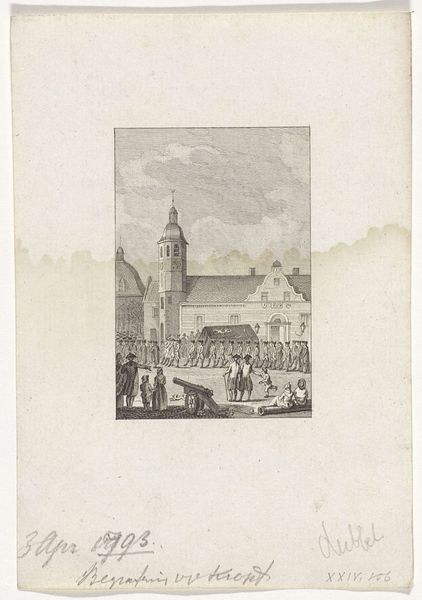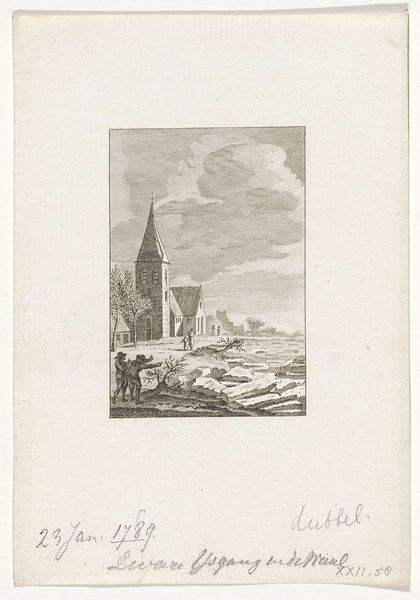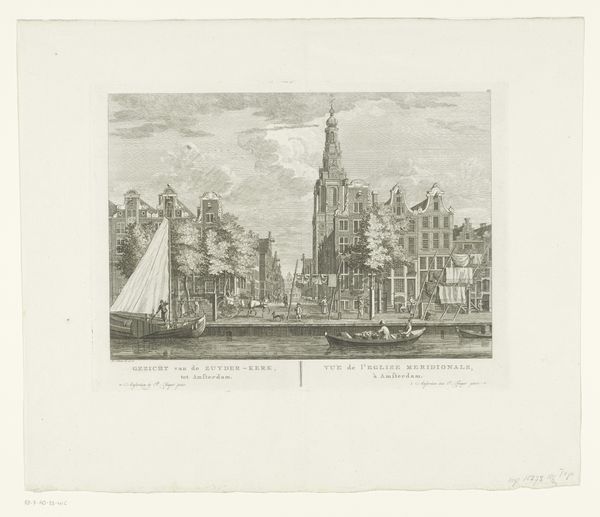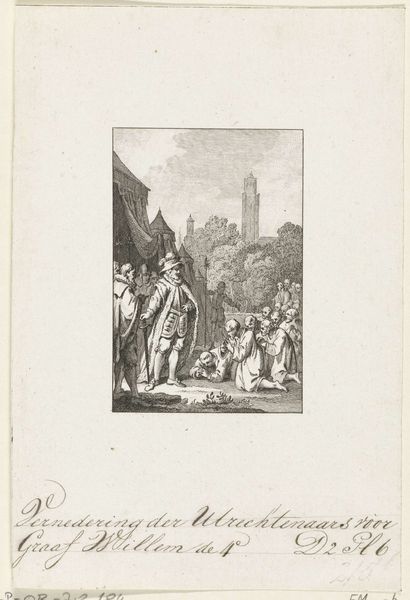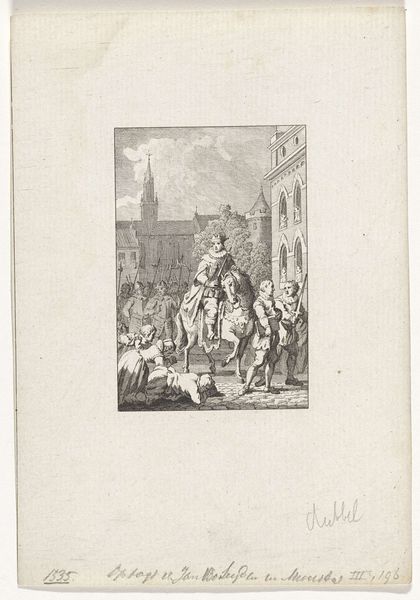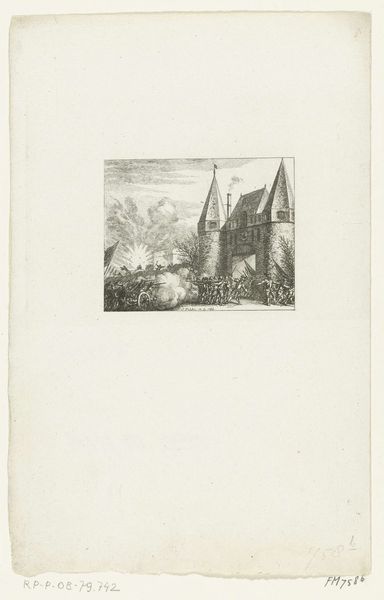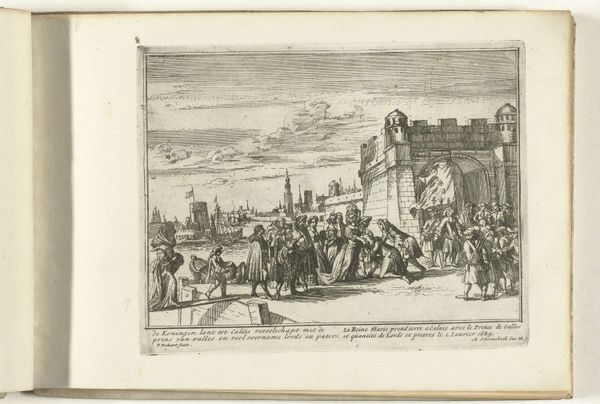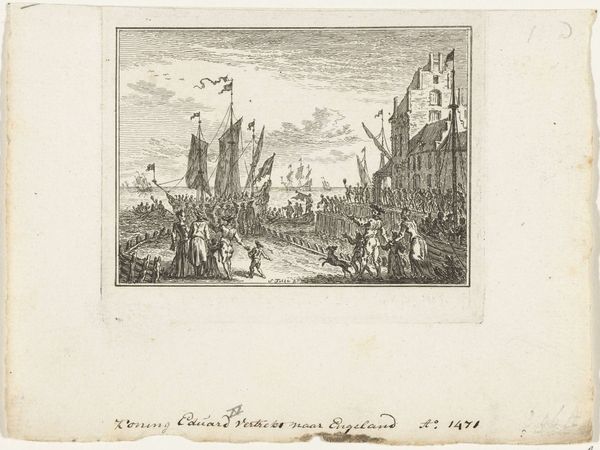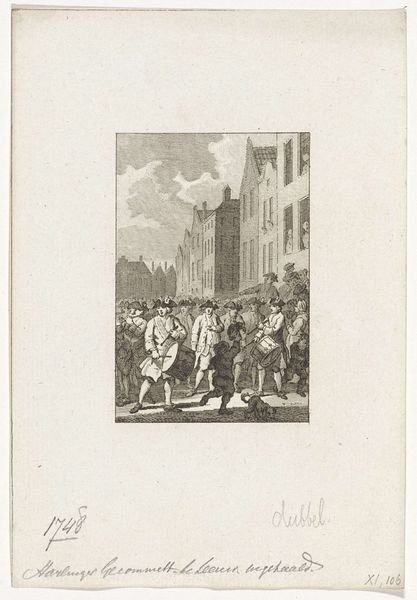
Dimensions: height 160 mm, width 100 mm
Copyright: Rijks Museum: Open Domain
Curator: This is "Vertrek van de Staten Commissie van Rotterdam, 1786" by Reinier Vinkeles, made sometime between 1783 and 1795. It combines etching, engraving, and pen on paper. It’s quite a detailed cityscape, isn’t it? Editor: It is. My immediate sense is one of subdued ceremony. The palette is limited, which lends a formality to the departure scene, yet there’s a certain…ordinariness, if that makes sense. It feels less like high political drama and more like Tuesday morning. Curator: I see what you mean. Vinkeles was a master printmaker, and here he employs combined methods to produce quite a textured surface. Look at the variation in line work! Think of the labor and skill that go into translating an entire city onto this copperplate! Editor: Absolutely. The textures and lines evoke a very precise time in Rotterdam’s history, a city bustling with trade and power, though I can’t help but view the "departure" within the larger context of late 18th-century European politics, where revolution was in the air, challenging those old guard structures. Curator: Precisely! And observe how Vinkeles crafts perspective. We get this wonderful layered depth, almost theatrical—the boat pulling away, figures in the foreground, the architectural mass of the city rising behind. Editor: The composition almost creates a division of class—those in the boat being rowed away versus those on the shore. It begs the question: who is benefiting from this system? And at whose expense is this elaborate departure taking place? This piece invites that conversation about societal power structures of the day. Curator: A very astute observation. It's in collections with titles that involve "genre-painting." It’s the everyday and not-so-everyday labors and interactions that produce such moments. Think of the inks and papers being produced, transported, sold – all integral to creating and disseminating this image to wider audiences. Editor: It makes you think about access, too. How many people actually saw this print, and what did they make of it? What conversations did it start, or was it meant to reinforce the prevailing social and political norms? These artworks offer valuable opportunities to consider whose stories get told and how. Curator: Ultimately, it really exemplifies how Neoclassicism pulled from Baroque style; a confluence that really enhances the power in this engraving. Editor: Indeed, offering a snapshot not just of Rotterdam, but of a world on the cusp of transformative change, prompting me to reflect on the continuous ebb and flow of societal structures and who benefits and suffers.
Comments
No comments
Be the first to comment and join the conversation on the ultimate creative platform.
